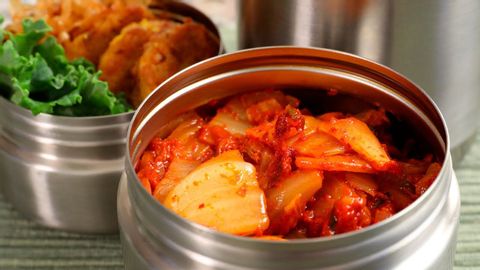
字幕與單字
炒泡菜dosirak(泡菜便當:김치볶음 도시락)。 (Stir-fried kimchi dosirak (Kimchi-bokkeum lunchbox: 김치볶음 도시락))
00
林宜悉 發佈於 2021 年 01 月 14 日收藏
影片單字
squeeze
US /skwiz/
・
UK /skwi:z/
- n. (c./u.)榨;榨(液體等);擁擠(的狀態);(從兩邊)擠;壓
- v.t.勒索;強取;榨出;擠出;榨;擠;壓;擰;壓縮;減少
- v.t./i.擠著行進
C1 高級中級英檢
更多 使用能量
解鎖所有單字
解鎖發音、解釋及篩選功能
